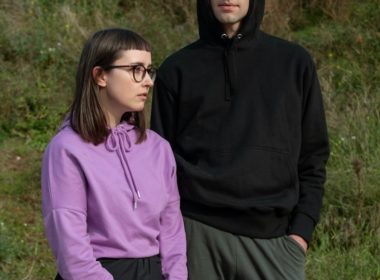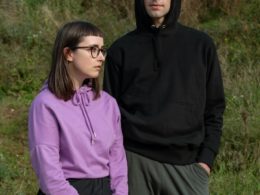We chat to serial entrepreneur and beverage creator, @Roy_Bntz on how to create a beverage brand. This Q & A interview takes a look at things you need to know, and where to start to launch or grow a successful beverage brand.
Specifically, this interview guides the entrepreneur with advice and know-how on:
- the best way to approach the challenges in the road up ahead
- what solutions may or may not work
- distribution channels to look at, and
- best-practices on forging your own path.
Roy, tell us a bit about your background
I’m a serial entrepreneur. I’m originally from Israel, and I moved to the US, to New York City, 9 years ago to study photography. Instead, I got bit by the entrepreneurial bug.
Since then, I’ve built and launched multiple CPG and online startups. I’m a former amateur Muay Thai fighter, so when I’m not building stuff, I like to be outdoors as much as possible.
What were the biggest challenges in growing your previous businesses?
Some background first: Our first company was called Beyond Neutral. It was an alkaline-forming cold press juice business. We were one of the first companies to discuss & promote alkalinity (and its importance).
Our second company was ShotCo., a premium organic cold-pressed line of shots that were like a daily vitamin. When we started back in 2016, this category of premium cold-pressed shots was still very young, and there were only a handful of other brands out there doing something similar. We had a pre-workout shot, post-workout shot, digestive shot, immunity-boosting shot, etc.
Our challenges for ShotCo were –
- Co-packer challenges – Since we were one of the first shot brands, co-packers had real trouble with our small 2oz bottles, their machines weren’t equipped to handle them and we had to shop around a lot before we found a co-packer that could manufacture them for us. Even then, they had issues with everything from caps to shrink wrap and boxing.
- Short shelf life, a non-shelf stable product has to be bought quickly, otherwise, it goes bad and you lose a lot of product (and money). The less we produced the higher our production costs. The more we produced (of specific SKUs) the more we had to throw away. Eventually, we cut down our SKUs to 3 which helped offset some of that.
- Refrigeration – Distribution had to be in a refrigerated truck and online sales had to be shipped with ice (heavy) both of which costs extra. Also, not every gym/yoga space could carry us since not all had fridges or fridge space and we had to “fight” for limited shelf space in retailers.
Talk to us about formulation. What are some best practices to help make a great beverage?
We did everything ourselves, however, if you want to save yourself a lot of time (and mess) there are many formulation companies that do this in a fraction of the time it took us. However, costs vary.
Whatever you do, make sure a lot of people taste it before you launch it.
Every time we found a few formulations that we thought were winners, we would gather 30 or so people and have them try them all out and then write anonymously on a page what their favorite ones were. This helped us get a better understanding of what were actual winners and what were just personal favorites.
We did a lot of small events as well. It didn’t matter if I liked a specific one. If our consumers didn’t, we would kill it… and fast. You can use all the best marketing & fancy buzzwords but if your beverage doesn’t taste amazing, you will not have repeat purchases.
If someone wants to create a beverage brand today, any advice for them?
Don’t!
Just kidding, it’s an amazing space to be in, and one I’m still deeply interested in – but it’s highly competitive so do your due diligence before you decide to start a CPG beverage brand. Between fighting for shelf space, figuring out DTC, online ads, creating relationships with distributors, and trying to differentiate yourself for consumers, it’s a very difficult task to pull off.
Figure out how to stand out in your category; no one is reinventing the wheel, they’re simply reimagining the existing.
Examples could be – bone broth in a can, wine in a box, water in a can, kombucha in a can, healthier soda, seltzers with herbal infusions, etc. Don’t try to invent something that doesn’t exist; simply take something that works and improve it, reimagine it, and think “How can I make this better”?
To create a beverage brand, keep your focus on 5 things:
- Health – Long gone are the days when you, as a small independent company, can launch a product that is deemed unhealthy. You can’t put a product packed with sugar or other unhealthy ingredients on the shelf. You have to create a beverage that will make people think that it’s either healthy or a healthier alternative than the competition.
- Price – Stay competitive. If your price is higher than the competition, especially in retail, consumers will go for the more affordable option.
- Brand – Your brand, your logo, your message, the way your bottle looks, the fonts you use, the packaging, the boxes you use, your social accounts, etc… Everything represents your brand. Be very aware of what that is and stay consistent.
- Shelf life – The longer your shelf life, the less risk you take on. Take that into account when you develop your drinks. The lighter your weight when you ship, the higher your margins. The minute you add dry ice, your margins drop significantly.
- Taste – You can make the cheapest, healthiest, best-looking brand alive but if the taste doesn’t slap, you’re sailing in a sinking ship. You have to nail it when it comes to taste!
Any thoughts on DTC vs retail vs Amazon?
I can only comment on what we did, which was DTC, retail, and events.
Events proved to be very successful for us… From the small yoga events to weekend markets, vegan markets, supermarkets, and large industry expos, we did them all. It was a great way to connect with our customers, build trust, talk to them face-to-face, show them the people behind the brand, tell them our story, and add a human element to the brand.
DTC was very successful for us… We worked a lot with micro-influencers by sending them free products and having them promote them. This was pre-Insta stories so most of them would post it on their page (longer visibility), and we worked hard on creating an Instagram feed that would be aligned with the brand.
However, since it had to stay cold, any shipment we did – specifically to the west coast – we would break even (at best) or often lose a few dollars. We tried focusing on the Tri-State area but our shipments to the west coast grew in volume. We had the idea of partnering with a west coast co-packer, as well, but just didn’t have enough in the bank at the time to justify that expansion.
Retail can be difficult and the one we focused the least on; both the distributors and the retailers get a cut. Unless you’re doing massive volumes, you’re making little to no profit. They essentially price it at whatever they want and place you wherever they want. They pay late and generally speaking show a lack of interest in you and your company.
With that said, I would do it differently in the current marketplace of 2022, and have much more retail presence due to a shift in consumer habits. If you can land deals with major retailers or big box stores, that’s a massive win for the company. Amazon will always prove to create accessibility for your customer and it’s pretty much a no-brainer in my book to have your product there. I don’t have personal experience working with Amazon for Shotco, but as a consumer I see huge value there.
Any tips or tricks for long-term success in the space, based on your experience?
IMO if you are looking for longevity you have to expand into retail and constantly evolve as a brand; the brand aesthetics, look, SKUs, taste profiles, ingredients, everything:
- You have to evolve over time to compete in the marketplace and keep consumers coming back.
- The market has shifted in recent years, so you cannot exist solely as an online company in the beverage space.
- Widen your distribution as much as possible and don’t ever forget the power of visibility on the shelf space.
- When your consumer is browsing the aisles, make sure you stand out and create noise (brand-wise) to be seen in the dense market.
What are brands whose product and marketing you really respect in the space?
At the time that we were live, we really looked up to Dirty Lemon. When they started out they were strictly a DTC model done via text. They had a great-looking product, killer design, a really cool Instagram account, great names, the whole 9. Dirty Lemon just oozed cool.
They used the same co-packer we were using at the time. That’s how we really got a first-hand look at the evolution and success of the brand. They’ve since gotten bought out and shifted strategy to retail – which is where the market as a whole has shifted.
Right now you would have to be crazy not to be in awe of what Liquid Death is doing. It’s water in a can with amazing branding that has become one of the fastest-growing beverage brands in the world. They were recently valued at $700 million. If I was an up-and-coming beverage startup, I would study and copy would those guys are doing. They have a very wide distribution and are placing themselves prominently in varied arenas through smart collaborations and marketing strategies.
What are you working on next?
Right now I’m building (currently revamping) Wilder, an outdoor marketplace for guided adventures. The site should go live early next year. Be sure to sign up for early access and to stay up-to-date on what we’re doing at Wilder
If you found this content insightful and helpful, please like and share this article with your circle. Also, make sure to subscribe to the newsletter for more product development tips!
– Oren
READ NEXT:
This interview forms part of a series of interviews with brand specialists and product strategists. See other interviews here.
PRODUCT PEOPLE – LEARN HOW TO BRING PRODUCTS TO LIFE!
There has never been a better time to launch your own product. Learn more about logistics, brand strategy, and supply chain management today. Access product playbooks, factory links, and insights for running your own brand direct in your inbox, FREE. Subscribe now.
FOLLOW ME ON SOCIAL MEDIA:
Twitter: http://www.twitter.com/orenmeetsworld
TikTok: https://www.tiktok.com/@orenmeetsworld
Join thousands of happy readers already on my Product People newsletter when you subscribe. I’d be excited to have you in the community!












I don’t think the title of your article matches the content lol. Just kidding, mainly because I had some doubts after reading the article.
Understanding your target market, focusing on product quality, differentiation, and a well-executed branding and marketing strategy are essential elements for success in the beverage industry.